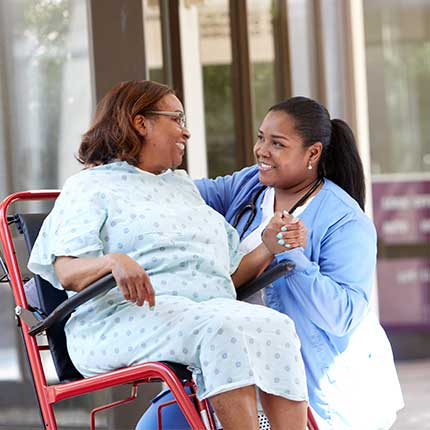Healthy Living
What Is Respiratory Syncytial Virus (RSV) in Children?
About 58,000 children younger than 5 years old are hospitalized because of the respiratory syncytial virus (RSV) annually in the United States. While this respiratory virus often causes mild, cold-like symptoms, RSV in children can be serious and may cause severe illnesses. RSV occurs in most regions of the U.S. each year during spring, fall and winter.
If you’re a parent or guardian, here are some other things you need to know about RSV, including how to help protect your children against this virus.
In fact, one to two in every 100 children younger than 6 months old who have RSV infection may need to be hospitalized and may require intubation, oxygen and/or mechanical ventilation to help them breathe and get better.
Sources:
Centers for Disease Control and Prevention
KidsHealth
If you’re a parent or guardian, here are some other things you need to know about RSV, including how to help protect your children against this virus.
What Are the Signs and Symptoms of RSV in Children?
RSV in children may be acute when it starts, but it can become severe in just a few days. Please see your pediatrician as soon as you see any of the following signs and symptoms of RSV in your child:- A runny or stuffy nose
- Cough (which may aggravate to wheezing)
- Decrease in appetite
- Fever
- Generally feeling sick
- Mild headache
- Sore throat
- Apnea (pauses while the baby is breathing)
- Decreased activity
- Decreased appetite
- Irritability
What Happens When Your Child Gets a Severe RSV Infection?
The Centers for Disease Control and Prevention says that all children may get an RSV infection by 2 years old. RSV cases are usually mild, but they may also lead to severe illnesses such as pneumonia (a lung infection) and bronchiolitis (inflammation of the lungs’ small airways).In fact, one to two in every 100 children younger than 6 months old who have RSV infection may need to be hospitalized and may require intubation, oxygen and/or mechanical ventilation to help them breathe and get better.
Who Are at Greatest Risk for Severe RSV Infection?
Children and babies who are at greater risk for severe RSV infection are as follows:- Premature infants
- Infants 6 months old and below
- Children below 2 years old with congenital heart disease and/or chronic lung disease
- Children with neuromuscular disorders
- Children with weakened immune system
How to Help Protect Your Child From RSV Infection
If you are a parent or guardian, you can take the following precautions to help protect your child against RSV infection, especially if your child is at a greater risk for RSV:- Wash your hands regularly and help your child do the same. You may also use an alcohol-based hand sanitizer to protect you and your child from germs.
- Avoid touching your mouth, eyes and nose without washing your hands first. As much as possible, keep your hands off your and your child’s face.
- Cover your mouth and nose when you sneeze and cough. Cover with a tissue as much as possible, and then throw the tissue in the garbage bin right away.
- Clean and disinfect frequently touched objects and surfaces. These include doorknobs, mobile devices, toys, remote controls and light switches. Sometimes these things catch and retain droplets containing germs when people cough or sneeze.
- Avoid close contact with people who are ill or have cold-like symptoms. Avoid sharing cups, kissing, hugging, holding hands or eating utensils with them.
- Stay home when you are ill as much as possible. This can also help protect other people from catching your illness.
Conclusion
RSV in children may be common, but that doesn’t mean your child has to suffer from it as well. We recommend that you follow the safety precautions to help keep your child from catching the virus and to see a pediatrician as soon as you detect any sign or symptom of RSV in your child. Your child’s health and safety are our priority.Sources:
Centers for Disease Control and Prevention
KidsHealth
Sign Up for Health Tips
Get our advice and upcoming events about weight, pain, heart and more.
Take a Health Risk Assessment
Our health assessments can help you identify issues and areas to discuss with your doctor.



